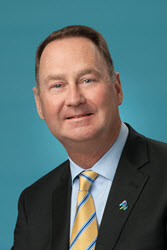
Sustainable Staffing through Managed Services Programs (MSP)
 Demand for healthcare services is growing at an extremely rapid rate, with employment in the healthcare industry currently rising at about a half million jobs a year, according to Employment Situation statistics from the US Bureau of Labor Statistics (BLS). According to their projections, job openings are growing approximately twice as fast as job hires.
Demand for healthcare services is growing at an extremely rapid rate, with employment in the healthcare industry currently rising at about a half million jobs a year, according to Employment Situation statistics from the US Bureau of Labor Statistics (BLS). According to their projections, job openings are growing approximately twice as fast as job hires.
Such overheated numbers are not surprising to us. In our staffing business, we are seeing demand for healthcare professionals outpacing supply at an alarming 2:1 ratio. This leaves administrators of hospitals and other healthcare organizations often scrambling to fill open shifts with temporary employees.
But filling temporary positions without a strategic plan can create staffing practices that are simply not sustainable. There is a better way – a Managed Services Program, or MSP.
Many healthcare systems have recognized that partnering with a staffing provider through an MSP creates a strategy around contingent labor that is more dependable, scalable, and cost-effective. Rather than informal procurement in the heat of a staffing crisis, the use of an MSP can help hospitals and other healthcare providers get a handle on their temporary hiring while controlling costs, improving visibility and mitigating risk.
MSPs create sustainability through access to talent, critical skill coverage, and increased administrative efficiencies, which can lead to overall cost savings. On average, clients who use the AMN MSP save 4%-7% on their overall contingent labor and also experience better continuity in patient care, reduced staff burnout, and decreased premium labor pay.
A staffing-led MSP, one option that AMN offers, reduces cumbersome and often costly redundancies that arise when staffing-related expenses aren’t centrally streamlined. This MSP simplifies:
- Management of vendors, contracts and payments
- Candidate recruitment, selection, interviewing and onboarding
- In-house staffing pool management
- All related administrative processes, including timekeeping, housing, billing and reporting
- Rate management through market insights and data
With job quits at a nine-year high and a tsunami of retirements facing the healthcare industry, organizations need improved access to talent and management of contingent staff to keep up with ongoing attrition.
But it’s not just about finding bodies to fill open positions. Providers need the right staff with the right skills at the right time. With national sourcing support and insights into local, regional and national rates, an MSP helps ensure that organizations remains competitive, thus attracting more clinicians to fill critical roles.
Helping a healthcare organization’s leadership understand what they are spending money on—and why—is an added benefit of an MSP. With a central point of contact, robust technology, and industry guidance, administrators gain a clearer view of overall staffing spend and gain needed insight for future budget and strategic planning.
Staffing shortages for nurses, allied professionals and physicians are expected to grow worse in the coming decade. According to the BLS, healthcare is quickly becoming the largest employment sector in the nation, and healthcare industries lead the pack as the fastest growing of all industries. But education and training programs are not graduating enough clinicians for the healthcare industry – today or in the future.
To succeed in the face of ongoing staffing challenges, healthcare organizations need sustainable workforce strategies. A staffing-led MSP is the best answer to date.


